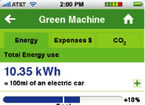It’s Not Easy Being Green: Creating a Green User Experience
Usability professionals can make both large and small choices that will help users have a green user experience.

Usability professionals can make both large and small choices that will help users have a green user experience.
To gauge success in changing people’s consuming patterns, we must be able to assess and monitor certain indicators both at an individual and community level.

What follows is a series of personal essays on sustainability.

When you begin any project, start thinking about how you can make it greener. Sustainable design is good design.

Sustainability refers to sustainable social, cultural, and financial systems, not just environmental systems, thus we need to consider how the things we make and use affect them.

Xeriscape, using drought-tolerant plants that require minimal water to survive and thrive, leads to greater residential water conservation.

Accidental sustainability is creating useful, satisfying, meaningful products and services people don’t need to replace and help conserve our resources.

The conundrums of living sustainably will only be resolved when wiser professionals step back and look at the big picture.

The Green Machine seeks to create a prototype to test whether it makes people reduce their energy consumption, holding significant implications on the use of Smart Grid software.

Studying the history of technology should not trivialize the contributions of our digital era but give new perspective to the affect of new and old on today’s users.

User Experience Professionals Association (UXPA) International supports people who research, design, and evaluate the user experience (UX) of products and services.